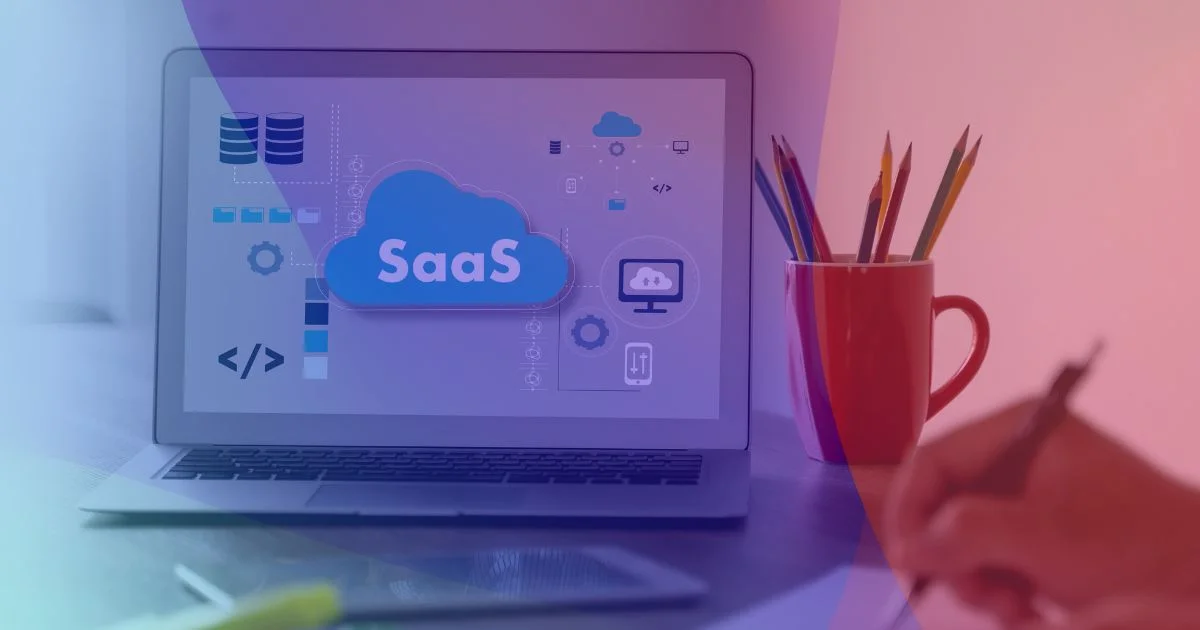Introduction
In the fast-paced world of software development, businesses are increasingly turning to Software as a Service (SaaS) solutions to meet their application needs. SaaS offers numerous advantages, such as cost-effectiveness, scalability, and accessibility. However, with the rise of SaaS applications, the importance of SaaS testing has also grown exponentially.
SaaS testing involves evaluating the functionality, performance, and security of SaaS applications to ensure that they meet the high standards expected by users. This type of testing is crucial in guaranteeing that the software operates flawlessly and delivers a consistent and reliable user experience.
SaaS testing differs from traditional software testing due to the unique nature of SaaS applications. Unlike traditional software, which is typically installed locally on a user’s machine, SaaS applications are hosted on the cloud and accessed remotely through a web browser. This distinction requires a different approach to testing, taking into account factors such as multi-tenancy, data privacy, and integration with other systems.
Furthermore, SaaS testing is not a one-time process but rather an ongoing activity throughout the entire software development lifecycle. It involves continuous testing and monitoring to identify and address any issues or vulnerabilities that may arise, ensuring that the application remains robust and secure.
In this article, we will explore the world of SaaS testing, its benefits, differences from traditional testing, challenges faced, best practices, and recommended tools. By understanding the intricacies of SaaS testing, businesses can optimize their software development processes and deliver superior SaaS applications to their users.
Overview of SaaS Testing
SaaS testing encompasses a comprehensive evaluation of various aspects of SaaS applications, including functionality, performance, security, and compatibility. This testing ensures that the application meets user requirements, performs optimally, and is protected against potential threats.
Functionality testing is a crucial aspect of SaaS testing, focusing on verifying that the application functions as intended. This involves testing each feature and functionality to ensure they work correctly and produce the expected outputs. Functional testing ensures that users can perform tasks efficiently and without any errors.
Performance testing evaluates the application’s responsiveness, scalability, and stability under various user loads and conditions. It helps identify bottlenecks, such as slow response times or memory leaks, and ensures that the application can handle the expected user traffic effectively. Performance testing is essential to deliver a smooth and uninterrupted user experience.
Security testing plays a vital role in SaaS applications, as they deal with sensitive user data that must be protected from unauthorized access. This type of testing detects vulnerabilities in the application’s security mechanisms, such as authentication and encryption. It also ensures compliance with industry standards and regulations related to data privacy and security.
Compatibility testing is performed to ensure that the SaaS application operates seamlessly across different browsers, operating systems, and devices. This testing verifies that the user interface is consistent and functional on various platforms and resolutions. Compatibility testing helps reach a wider user base, as users can access the application from their preferred devices and environments.
Additionally, SaaS testing involves integration testing to ensure that the application can seamlessly integrate with other systems or APIs. It verifies proper data exchange and functionality between the SaaS application and external components. Integration testing is crucial for SaaS applications that rely on smooth communication and data sharing with third-party services or databases.
Overall, SaaS testing is a comprehensive process that ensures the reliability, performance, and security of SaaS applications. By conducting thorough testing across various dimensions, businesses can deliver high-quality SaaS solutions that meet user expectations and drive success in the competitive software market.
Benefits of SaaS Testing
SaaS testing offers numerous benefits that are essential for businesses seeking to deliver reliable and high-performing software solutions. Let’s explore some of the key advantages of incorporating thorough testing practices into SaaS development processes.
One of the primary benefits of SaaS testing is improved software quality. By conducting comprehensive testing, businesses can identify and rectify any functionality issues or bugs, ensuring that the application functions as intended. This leads to increased user satisfaction and reduces the likelihood of negative user experiences or abandonment of the software.
Another major advantage of SaaS testing is enhanced performance. Performance testing evaluates the application’s responsiveness, scalability, and resource consumption under various conditions, allowing businesses to optimize the software for optimal performance. By identifying and addressing performance bottlenecks, businesses can ensure that the application can handle the expected user loads and deliver a seamless user experience.
SaaS testing also plays a crucial role in ensuring the security of the application and user data. By conducting security testing, businesses can identify vulnerabilities and implement necessary measures to protect against potential threats. This is especially important for SaaS applications that handle sensitive user information, such as personal details or financial data.
In addition to improved quality, performance, and security, SaaS testing provides businesses with a competitive advantage. By delivering a reliable and high-performing SaaS solution, businesses can attract and retain more customers. This leads to increased customer satisfaction, positive brand reputation, and ultimately, business growth. Satisfied users are more likely to recommend the software to others, further expanding the user base.
SaaS testing also helps businesses reduce costs by identifying and addressing issues earlier in the software development cycle. By detecting and resolving bugs and performance bottlenecks during testing, businesses can avoid costly fixes and rework during the later stages of development or after the application has been deployed. This saves both time and resources, allowing businesses to operate more efficiently.
Overall, SaaS testing offers a wide range of benefits that contribute to the success of businesses in the software industry. By ensuring software quality, performance, security, and user satisfaction, businesses can position themselves as industry leaders and gain a competitive edge in the ever-evolving software market.
Differences between SaaS Testing and Traditional Testing
SaaS testing differs from traditional software testing in several ways due to the unique nature of SaaS applications. Let’s explore some of the key differences between these two testing approaches.
One of the main differences is the deployment model. Traditional software is typically installed locally on a user’s machine, while SaaS applications are hosted on the cloud and accessed via a web browser. This distinction requires a different approach to testing. SaaS testing focuses on verifying the application’s functionality, performance, and security in a multi-tenant, cloud-based environment.
Another difference is the testing scope. Traditional software testing often involves testing the entire application, including modules and components that are not directly relevant to a specific user. In contrast, SaaS testing focuses on the functionality and user experience relevant to individual tenants. It involves testing different configurations and customization options available to each tenant, ensuring that the application works as expected for each user.
Scalability is another area where SaaS testing differs from traditional testing. SaaS applications are designed to handle a large number of users simultaneously. Therefore, scalability testing is crucial to ensure that the application can scale effectively and provide a consistent user experience even under heavy user loads. Traditional software testing typically does not have the same emphasis on scalability.
Data security is also a significant difference between SaaS testing and traditional testing. SaaS applications handle sensitive user data that must be protected from unauthorized access. Therefore, SaaS testing includes robust security testing to identify and address vulnerabilities in the application’s security mechanisms. Traditional software testing may have a different focus on security, depending on the nature of the application.
Integration testing is another key difference. SaaS applications often rely on seamless integration with other systems or APIs to provide additional functionalities or data exchange. Therefore, SaaS testing involves thorough integration testing to ensure that the application can communicate effectively with external components. Traditional testing may also involve integration testing, but it may not have the same level of complexity as SaaS testing.
Overall, SaaS testing and traditional testing differ in their approach, scope, scalability emphasis, security focus, and integration complexity. Understanding these differences is essential for businesses to adapt their testing strategies when developing and testing SaaS applications to ensure optimal performance, functionality, and user satisfaction.
Challenges of SaaS Testing
SaaS testing presents unique challenges that testing teams must overcome to ensure the reliability, performance, and security of SaaS applications. Let’s explore some of the key challenges faced during SaaS testing.
One of the primary challenges is the complexity of the SaaS environment. SaaS applications often rely on distributed systems, multiple layers of infrastructure, and various third-party integrations. Testing such complex environments requires an understanding of the entire system architecture and the ability to simulate real-world scenarios. It can be challenging to replicate the exact production environment in a testing environment.
Another challenge is multi-tenancy. SaaS applications are designed to serve multiple tenants, each with their own unique configurations and data. Testing the application with different tenant settings and data can be complex and time-consuming. Testers must ensure that different configurations and customizations do not impact the overall functionality or performance of the application.
Scalability testing is another significant challenge in SaaS testing. SaaS applications are expected to handle a large number of users simultaneously. Testing the application’s performance and scalability under various user loads and conditions requires sophisticated testing tools and techniques. It can be challenging to simulate and reproduce the expected user traffic accurately.
Data security is a critical challenge in SaaS testing. SaaS applications handle sensitive user data, such as personal information or financial data. Testing the application’s security mechanisms to identify and address vulnerabilities is crucial. Testers must ensure that the application complies with industry standards and regulations related to data privacy and security.
Continuous testing is also a challenge in SaaS testing. Unlike traditional software testing, SaaS testing is an ongoing process that occurs throughout the entire software development lifecycle. The application is continuously updated and deployed with new features, bug fixes, and security patches. Testing teams must keep up with the rapid release cycles and ensure that all changes are thoroughly tested before being rolled out to users.
Lastly, SaaS testing often necessitates collaboration with different teams and stakeholders. Testers must work closely with developers, architects, product owners, and customer support teams to gather requirements, understand the system architecture, and coordinate testing efforts effectively. Effective communication and collaboration can be challenging, especially when dealing with remote teams or multiple stakeholders.
Addressing these challenges requires a combination of technical expertise, robust testing strategies, and the use of suitable testing tools. By recognizing and overcoming these challenges, testing teams can ensure that SaaS applications are thoroughly tested and meet the high standards of functionality, performance, and security expected by users.
Best Practices for SaaS Testing
Effective SaaS testing requires a well-defined approach and adherence to best practices. Let’s explore some of the key best practices that can help ensure the success of SaaS testing efforts.
1. Comprehensive Test Planning: A robust test plan is essential for successful SaaS testing. It should include clear objectives, test scope, test requirements, and test timelines. The test plan should be regularly reviewed and updated as the project progresses.
2. Test Automation: Leveraging automation tools can greatly enhance the efficiency and effectiveness of SaaS testing. Automated tests can be reused, executed more frequently, and provide faster feedback on the application’s functionality, performance, and security.
3. Realistic Test Data: Using realistic test data is crucial for accurate and meaningful testing. Test data should resemble real-world scenarios, including different user profiles, varying data volumes, and a mix of valid and invalid inputs.
4. Performance Testing: Conducting thorough performance testing is essential for SaaS applications. This includes load testing, stress testing, and endurance testing to assess how the application performs under different user loads and in prolonged usage scenarios.
5. Security Testing: Robust security testing is crucial to identify vulnerabilities and ensure the protection of sensitive user data. Testers should perform thorough penetration testing, vulnerability scanning, and compliance testing to address potential security risks.
6. Integration Testing: SaaS applications often rely on seamless integration with other systems or APIs. Integration testing should be conducted to ensure that the application can effectively communicate and exchange data with external components.
7. Continuous Testing: SaaS testing should be an ongoing activity throughout the software development lifecycle. Implementing continuous testing practices, where tests are automated and executed consistently, helps identify and address issues early on and ensures high software quality.
8. Collaboration and Communication: Effective collaboration and communication between testers, developers, and other stakeholders is essential for successful SaaS testing. Regular meetings, clear documentation, and open channels of communication ensure that everyone is aligned and aware of the testing progress and outcomes.
9. Feedback-driven Improvement: Testers should actively gather feedback from users, customer support teams, and stakeholders to continuously improve the testing process. This feedback can guide the identification of additional test scenarios, priority areas for testing, and areas for potential enhancement.
10. Documentation and Reporting: Maintaining comprehensive documentation and regular reporting of testing activities, outcomes, and defects is essential. This helps in tracking progress, identifying trends, and facilitating communication with stakeholders.
By following these best practices, businesses can optimize their SaaS testing efforts, deliver high-quality SaaS applications, and ensure a seamless user experience.
Recommended Tools for SaaS Testing
Choosing the right tools is crucial for efficient and effective SaaS testing. Here are some recommended tools that can assist testers in conducting comprehensive testing of SaaS applications.
1. Selenium: Selenium is a widely-used open-source tool for automating web-based testing. It allows testers to write test scripts in various programming languages and supports multiple browsers and operating systems. Selenium’s robust features and flexibility make it an excellent choice for functional testing of SaaS applications.
2. JMeter: Apache JMeter is a powerful tool for conducting performance testing of SaaS applications. It supports load testing, stress testing, and scalability testing to assess application performance under different user loads. JMeter provides extensive reporting capabilities and can simulate realistic user scenarios to identify performance bottlenecks.
3. OWASP ZAP: OWASP ZAP (Zed Attack Proxy) is a widely-used pen-testing tool that helps identify security vulnerabilities in SaaS applications. It can be used to perform security scanning, vulnerability assessment, and penetration testing. OWASP ZAP provides detailed reports and is highly effective in detecting common web application security flaws.
4. Postman: Postman is a popular API testing tool that facilitates testing and debugging APIs. It offers a user-friendly interface where testers can send requests, manage collections, and assess API responses. Postman supports various authentication methods, making it suitable for testing SaaS applications that rely on API integrations.
5. LoadRunner: LoadRunner is an enterprise-level performance testing tool that can handle complex SaaS testing scenarios. It supports a wide range of protocols and can simulate thousands of virtual users to evaluate application performance, scalability, and reliability. LoadRunner provides in-depth performance analysis and supports multiple reporting options.
6. TestComplete: TestComplete is a comprehensive test automation tool that offers a wide range of features for functional testing, regression testing, and UI testing of SaaS applications. It supports multiple scripting languages and integrates well with other testing tools and frameworks, making it suitable for end-to-end automation testing.
7. BrowserStack: BrowserStack is a cloud-based testing platform that allows testers to perform cross-browser and cross-device testing of SaaS applications. It offers a vast collection of real browsers and devices for testing, eliminating the need for maintaining an extensive device lab. BrowserStack helps ensure the compatibility and responsiveness of SaaS applications across various environments.
8. JIRA: JIRA is a popular issue tracking and project management tool that can be used for managing SaaS testing activities. It enables testers to create and track testing tasks, log defects, and collaborate with other team members. JIRA provides customizable workflows, reporting capabilities, and integration with other testing tools.
These are just a few of the many tools available for SaaS testing. The choice of tools may depend on the specific requirements and preferences of the testing team. Selecting the right combination of tools can significantly streamline and enhance the SaaS testing process, leading to improved quality and reliability of the software.
Conclusion
SaaS testing is a critical component of the software development lifecycle for businesses relying on SaaS applications. It involves evaluating the functionality, performance, and security of SaaS applications to ensure that they meet user expectations and deliver a seamless user experience. By following best practices and utilizing recommended tools, businesses can overcome the challenges associated with SaaS testing and optimize the quality of their SaaS applications.
Thorough SaaS testing offers numerous benefits, including improved software quality, enhanced performance, stronger security measures, and a competitive advantage in the market. By conducting comprehensive tests, businesses can identify and rectify any issues or bugs, ensure optimal performance under different user loads, protect sensitive user data, and deliver a reliable and high-performing SaaS solution.
Furthermore, continuous testing, effective collaboration, and feedback-driven improvement are essential elements of successful SaaS testing. By implementing these practices, testers can stay up-to-date with the evolving nature of SaaS applications, ensure consistent software quality, and deliver a seamless user experience.
Choosing the right tools is also crucial in SaaS testing. Tools like Selenium, JMeter, OWASP ZAP, and Postman can significantly enhance the efficiency and effectiveness of different testing aspects, such as functional testing, performance testing, security testing, and API testing.
In conclusion, by prioritizing SaaS testing, businesses can deliver robust, high-performing, and secure software solutions that meet the expectations of their users. It is a crucial investment that ensures the success and longevity of SaaS applications in today’s competitive software market.

























